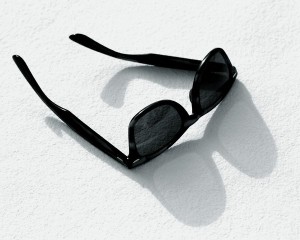How to choose prescription sunglasses?
Sometimes all the options available for those choosing prescription sunglasses can make the task so overwhelming that it is easier not to make the choice at all. So to try to simplify the process let me highlight a few keys points when making your decision.
Price
As with anything, you generally get what you pay for. A more expensive set of sunglasses will mean you get a better quality and more comfortable frame. The lens will have better optics, more comfortable tints and better scratch coatings. That being said you can get good quality sunglasses without breaking the budget. My Recommendation: If you want an inexpensive lens, we have some starting at $20.
Base Curve
Base curve refers to how much wrap your sunglass lens has. Wrap is desirable because it helps eleminate sun coming in from the side or behind the lens. Optometrists have an instrument that can measure the base curve of the frame, but sunglasses are generally either 8 Base (lots of wrap) or 6 Base. Frames that you use as your everyday clear lenses are usually between 2-6 Base. High Wrap sunglasses (8 Base) look great without a prescription, but when you add a prescription to them, the lens can get very thick and distorted at the edges. This means that unless you have a very low prescription, you should avoid wrap frames for your prescription sunglasses. My Recommendation: For a prescription sunglass, look for a 6 base frame for a good compromise in function and optics.
Polarized
Polarization is often an overlooked option, mostly because of the price. But once you have had a polarized lens you will never want a pair of sunglasses without it. Polarization is the feature that eliminates horizontal glare off a wet road, water or any horizontal surface. It makes lenses incredibly comfortable. My Recommendation: Splurge for the polarized lens, you won’t be disappointed.
Tint Colour
Tint colour affects the contrast of what you see. Grey lenses will keep colours looking normal but will do little to improve contrast. Blue or purple lenses will reduce contrast and that is why you don’t see sunglasses with this colour. Brown or amber tints will tend to improve contrast and make things appear a little brighter. There is not really any right or wrong with regards to tint, it is more about personal preference. My Recommendation: If you don’t have any preference, I would recommend an amber tint.
Anti-reflection Coating
Antireflection is a must for clear lenses but it serves a different purpose in sunglasses. An antireflection coating on the front of the lens is not needed on sunglasses, however some high-end sun lenses will have an antireflection on the back of the lens which can eliminate reflections from sunlight that comes from behind you. My Recommendation: If the sunglass lenses come with a back surface antireflection coating great, but if not I don’t think you have to invest in it – invest in a polarized lens instead.
UV Protection
UV protection is essential. Fortunately even the least expensive sunlens will have a UV coating. One important fact, that most are not aware of, is that UV protection has nothing to do with how dark the lens is. The UV coating is a clear coating that blocks invisible UV light. You can have a non-sunglass lens that blocks 100% of UV light. My Recommendation: UV Protection is essential to reduce the risk of earlier cataracts and macular degeneration.
Hopefully this will be enough to get you started.
Michael Nelson. OD



